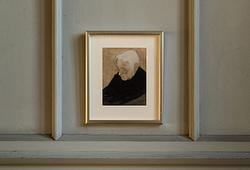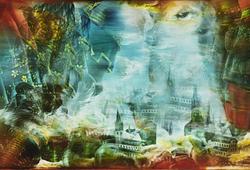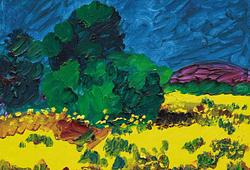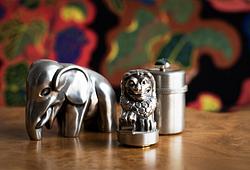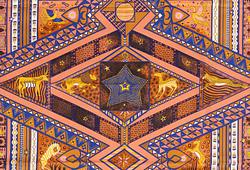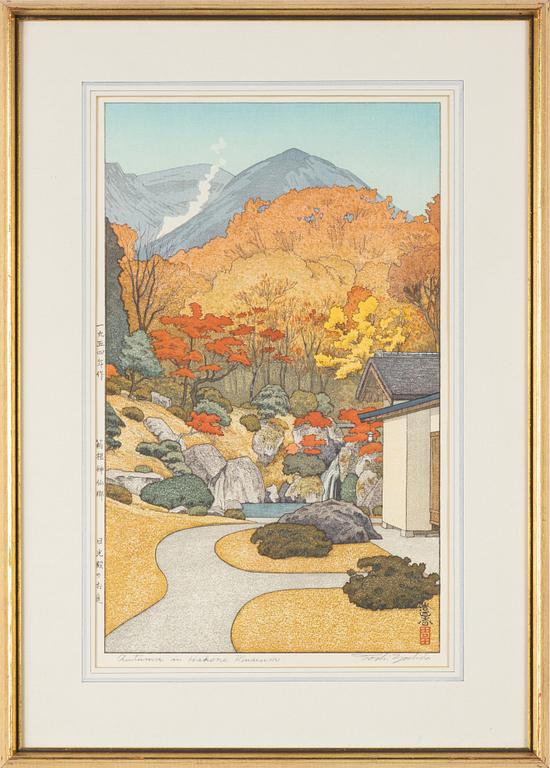Toshi Yoshida
Toshi Yoshida, A woodblock print in colurs, 1954, signed in pencil.
"Autumn in Hakone Museum." I 37 x 22 cm.
Not examined out of frame.
Artist
Tōshi Yoshida (吉田 遠志, Yoshida Tōshi, 25 July 1911 – 1 July 1995) was active in the sōsaku-hanga movement; son of the shin-hanga artist Hiroshi Yoshida. Yoshida's leg was paralysed during his early childhood, which meant he could not attend school. He enjoyed watching animals and spent a lot of time in his father's printmaking studio. Encouraged by his grandmother Rui Yoshida, Tōshi frequently scetched animals. Yoshida's artistic career oscillated between following his father's legacy and seeking freedom from it. In 1926, Tōshi chose animals as his primary subjects, partly to distance himself from his father's imagery, which was characterized by landscapes. However, in the 1930s, Tōshi began creating landscape paintings and prints similar to his father's work. Father and son travelled together, and in 1930-31, Hiroshi and Tōshi journeyed through India, Shanghai, Hong Kong, Malaysia, Singapore, and Burma. In 1971, Yoshida returned to focusing on birds and animals; his Humming Bird and Fuchsia from 1971 was a precursor to the African works he made the following year. From 1971 to 1994, until the last years of his life, Tōshi worked almost exclusively with animal subjects. Tōshi was also a children's book illustrator. He wrote his own short stories and created illustrations for the Animal Picture Book series. His father's death in 1950 marked Tōshi's complete break from his past and from naturalism. In 1952, Yoshida began a series of abstract woodblock prints, influenced by his brother, Hodaka Yoshida. In 1953, Tōshi travelled to the USA, Mexico, London, and the Middle East. He exhibited at thirty museums and galleries in eighteen countries.
Read more



